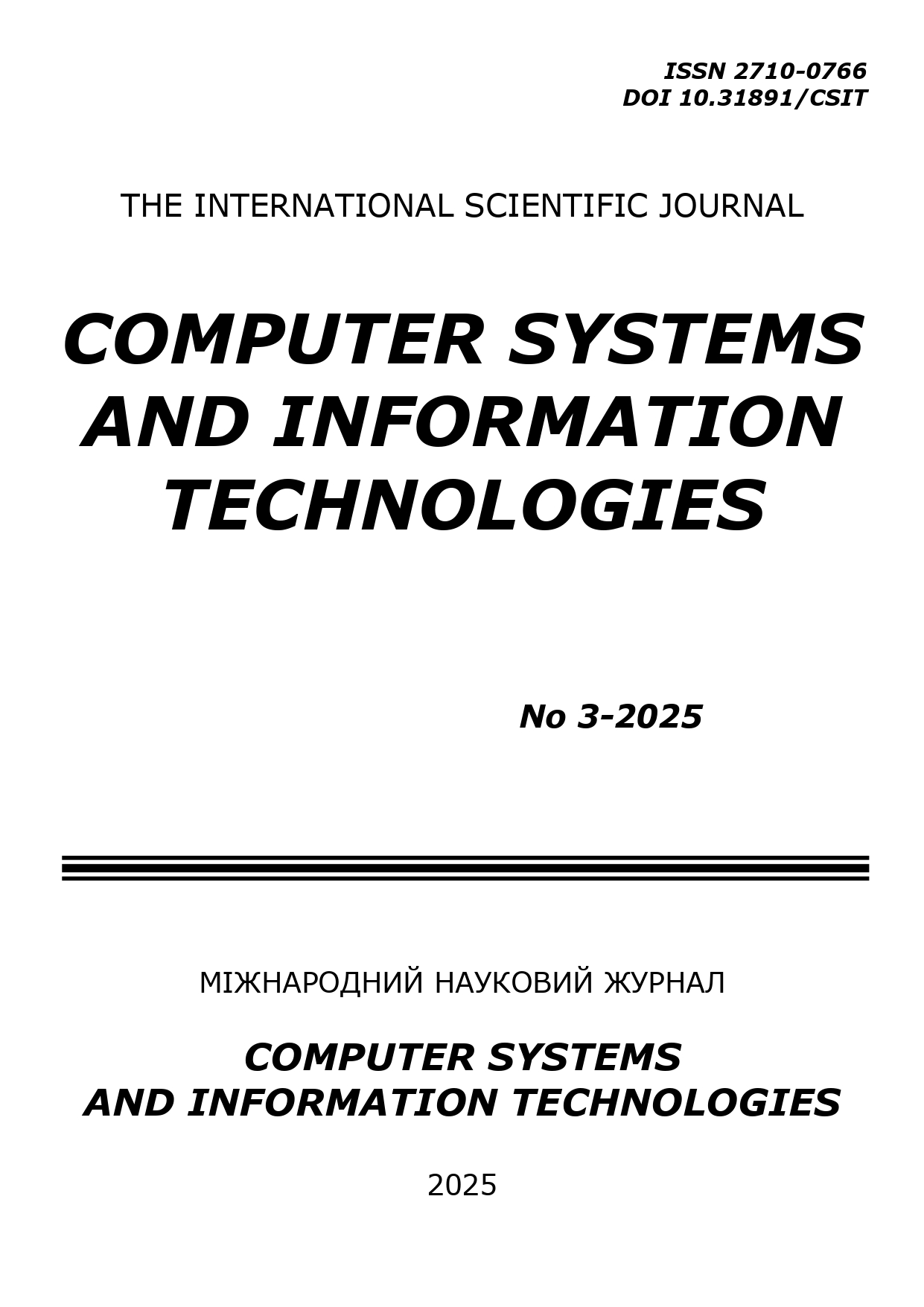ADVANCED METHODS OF APPLYING CODING SYSTEMS IN THE DESIGN OF DIGITAL COMPONENTS FOR CYBER-PHYSICAL SYSTEMS
DOI:
https://doi.org/10.31891/csit-2025-3-7Keywords:
digital components, signal processing, neuron, perceptron, pixelAbstract
This study aims to develop highly efficient digital components for cyber-physical systems capable of self-recovery, high-speed data processing, and reliable operation in real-time environments. The paper proposes new approaches to information encoding, particularly for RGB color image representation, and the modeling of neuro-like structures using the code systems of Krestenson, Rademacher, and Haar. The methodology is based on the mathematical foundations of the residue number system (RNS), modular arithmetic, and structural analysis of digital components. Hybrid models of formal neurons, perceptrons with delay lines, and wavelet neurons are employed to solve signal classification tasks. A model of signal self-recovery in a neural bundle is developed, taking into account failures of individual elements and inhibitory effects. As a result, a fault-tolerant mechanism for information transmission in bioneural structures is implemented, along with algorithms for encoding RGB pixels in the R-C and H-C code systems. These methods ensure unambiguous decoding and allow adaptive encoding in the presence of data loss or corruption. The scientific novelty lies in the integration of biological fault-tolerance principles with digital encoding methods based on RNS, providing adaptive signal recovery without the need for complete decoding. The practical significance of the research is in the potential application of the results to digital vision devices, sensor platforms, embedded systems, and high-performance processors for intelligent computing in cyber-physical environments.
Downloads
Published
How to Cite
Issue
Section
License
Copyright (c) 2025 Наталія ВОЗНА, Володимир ГРИГА, Леся МИЧУДА , Лідія ШТАЄР

This work is licensed under a Creative Commons Attribution 4.0 International License.

